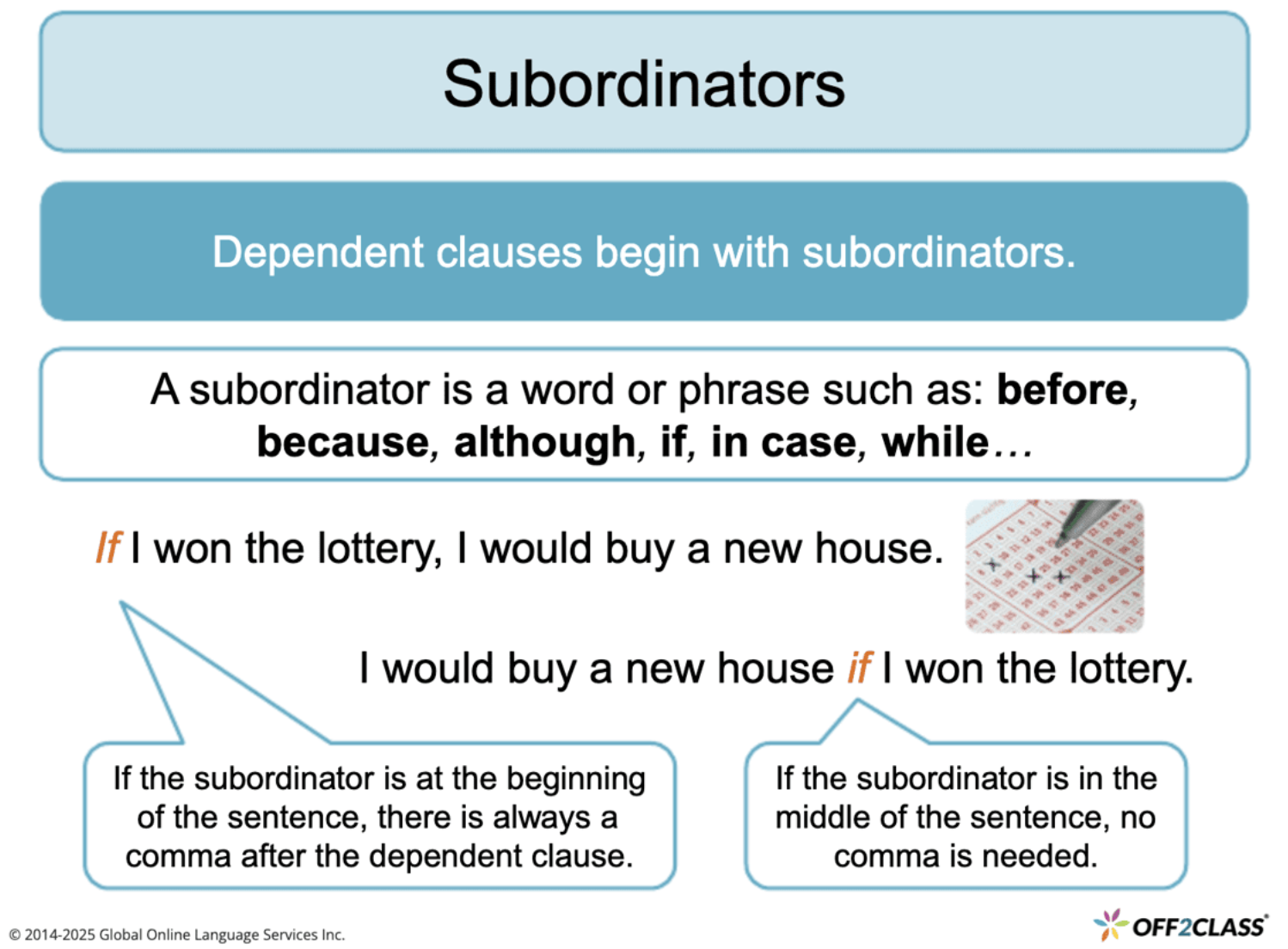5 min read
Share this post

Our new ESL Lesson Plan introduces students to independent and dependent clauses, and how to connect these with subordinators, coordinators and transitions. Understanding their usage is essential to everyday communication. Students will certainly benefit from this engaging lesson that includes clear descriptions, examples and practice opportunities. Keep reading to discover what to expect and how to teach it virtually or in-person.
This ESL lesson plan download on subordinators, coordinators and transitions is aimed at students with intermediate proficiency levels (B1+ level). Ensure you guide your student on appropriate usage in both formal and informal contexts and in spoken and written registers.
You can download the lesson plan here:
We recommend LW2.1 Expressing Addition, LW3.1 Expressing Time and Sequence-1 and LW3.2 Expressing Time and Sequence-2 as follow-up lessons.
This lesson begins with an introduction to independent and dependent clauses:
Afterward, move on to the slides introducing subordinators, coordinators and transitions.
With playful illustrations, examples and practice questions, these slides are designed to help students understand and master how to connect independent and dependent clauses.
If you are looking for even more information on how to teach this lesson plan, be sure to download a free Off2Class account. You will gain access to teacher notes that will guide and prepare you.
If you enjoyed this ESL lesson plan download, there are 150+ more available here. The lesson plans are designed to save you time. Also, let us know what kind of lessons you are looking for from Off2Class. More than anything, we love hearing from our teachers. So leave your general suggestions, lesson plan ideas, teaching philosophy or anything related in the comments below. Happy teaching!
Share this post


